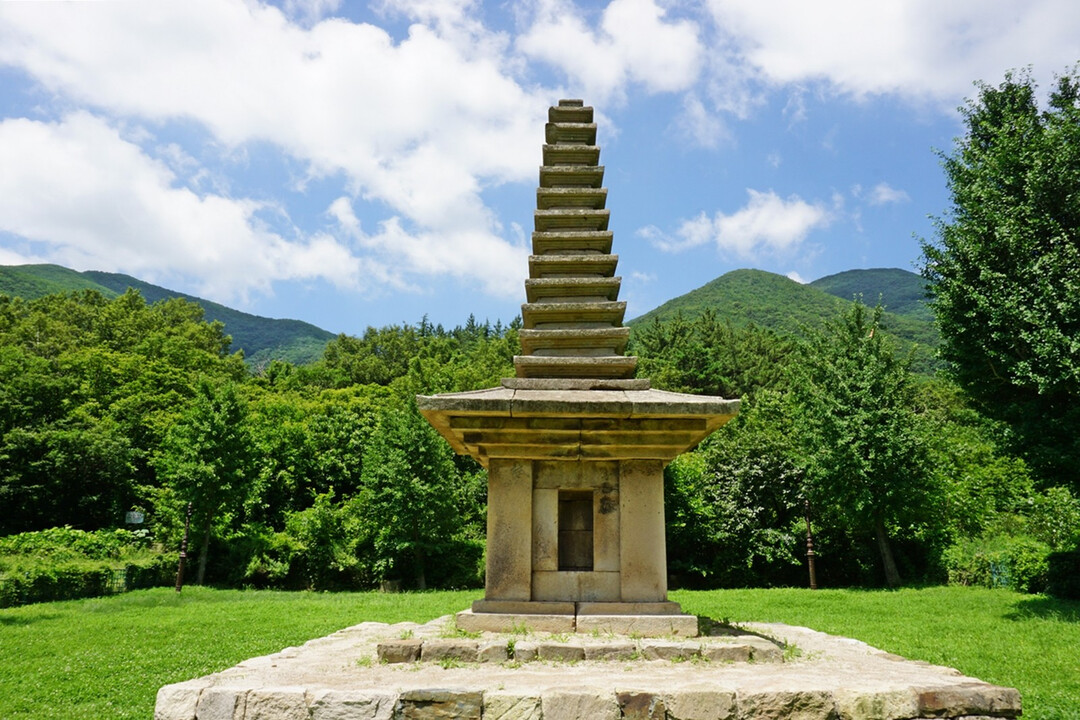
Gyeongju, South Korea — In the serene countryside of Gyeongju, a city steeped in the history of the Silla Kingdom, a solitary stone pagoda rises from an open field. This is the Thirteen-story Stone Pagoda at the Jeonghyesa Temple Site, a monument that defies the conventions of its era and stands as a unique masterpiece of Unified Silla architecture. Designated as National Treasure No. 40 in 1962, this pagoda is not merely a relic of the past but a key to understanding a pivotal moment in Korean cultural history.
Constructed during the Unified Silla period (668-935 CE), the pagoda is an anomaly in its design. While the era is celebrated for its standardized three-story stone pagodas—epitomized by the graceful Seokgatap at Bulguksa Temple—the Jeonghyesa pagoda breaks the mold with its towering thirteen stories. What makes this structure so significant is not just its height, but its innovative and visually striking proportions. The first story is exceptionally large, providing a solid, grounded base. However, the subsequent twelve stories shrink dramatically and then decrease in a remarkably consistent ratio, creating an upward-tapering silhouette that is both dynamic and stable. This deliberate architectural choice demonstrates a sophisticated understanding of visual balance and aesthetic appeal.
The pagoda's uniqueness extends to its meticulous details. The first-story body stone is carved with doors on each of its four faces, a feature that hints at a function or symbolism that is now lost to history. Even more distinct is the construction of its roof stones. Unlike typical pagodas where the roof's underside supports are carved from the same block of stone, this pagoda uses separate stones for these supports. This method, along with the roof's characteristically upturned corners—a style often likened to the playful curve of a traditional Korean boot—lends the entire structure an unusual sense of lightness and elegance. These technical and artistic deviations from the norm have made the Jeonghyesa pagoda an invaluable resource for scholars studying the evolution of stone pagoda design during the Northern and Southern Dynasties period.
Standing at 5.9 meters, the pagoda is all that remains of the once-thriving Jeonghyesa Temple. Its solitary presence in a vast, empty field serves as a poignant reminder of impermanence and the passage of time. Yet, its isolation also amplifies its beauty. The lush, mountainous landscape that frames the scene and the ancient ginkgo tree that stands as its silent companion transform the simple monument into a captivating subject. The pagoda itself is a powerful visual narrative, a silent poem etched in stone, that speaks to the faith, artistry, and technical prowess of its creators. It is a monument that not only survived centuries of change but also preserved a singular, innovative architectural vision for future generations to study and admire.
In an age when much of the past has been lost or rebuilt, the Thirteen-story Stone Pagoda at the Jeonghyesa Temple Site stands as an authentic and enduring link to Korea's rich heritage. It invites visitors to step back in time, to appreciate the delicate balance of its form, and to contemplate the profound beauty that can emerge from a single, well-placed object in the expanse of nature.
[Copyright (c) Global Economic Times. All Rights Reserved.]




























